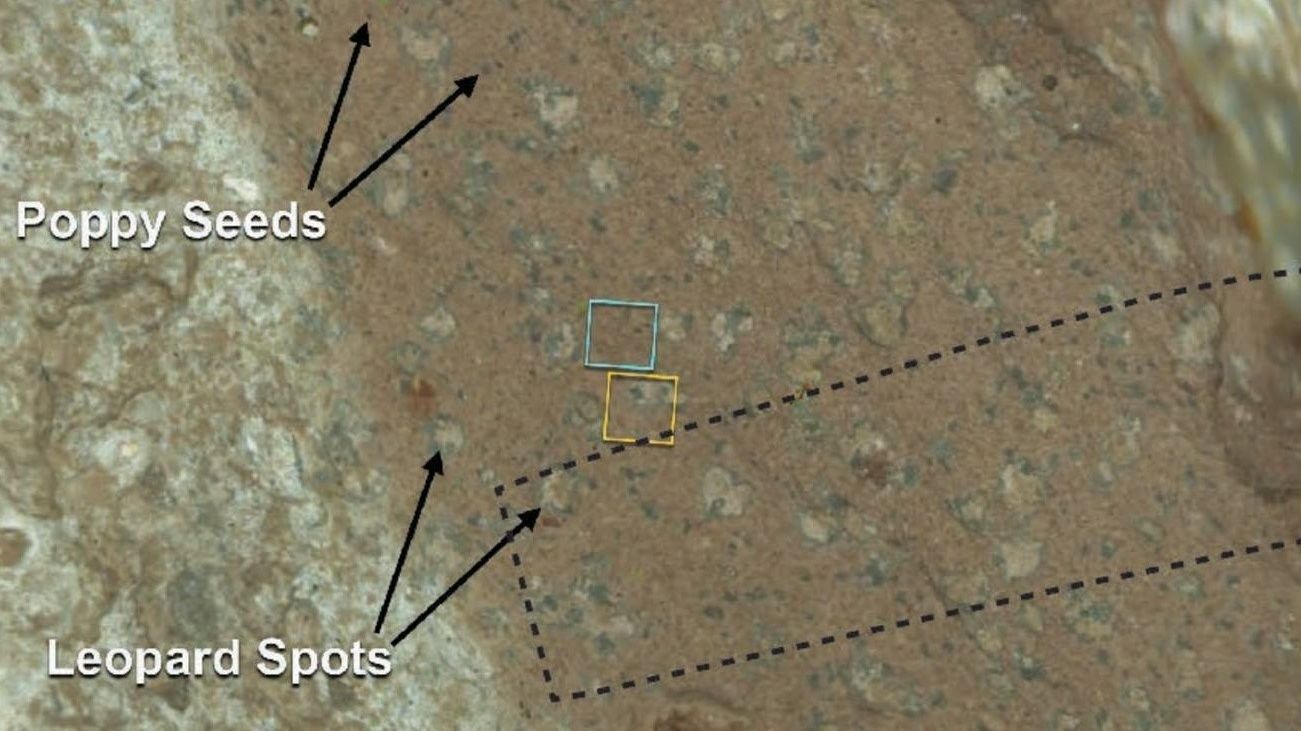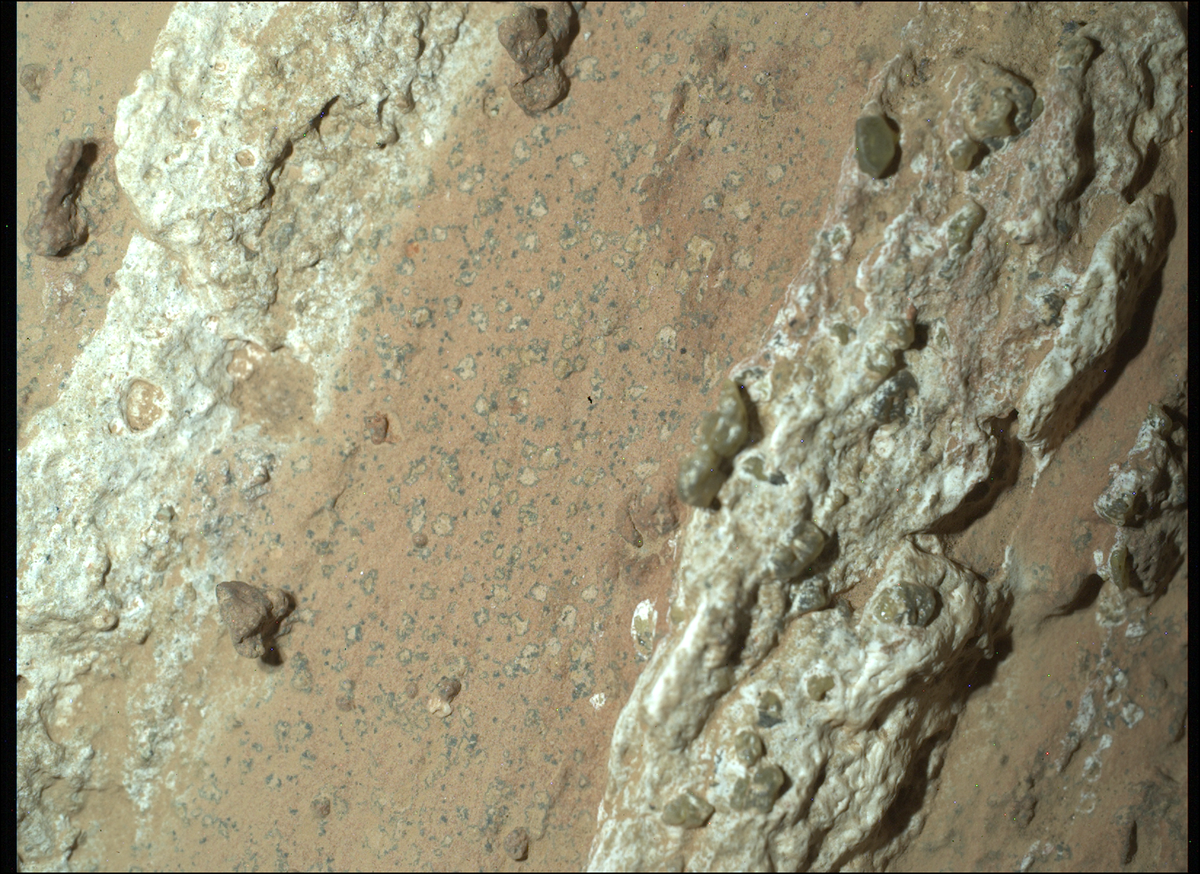Follow us on Google News (click on ☆)

A close-up of the Martian rock of interest, showing areas called 'poppy seeds' and 'leopard spots'.
Credit: J.A. Hurowitz et al.
The rock, named Cheyava Falls, was discovered in the Jezero crater by NASA's Perseverance rover. It displays spots of various colors and structures that could indicate past biological activity. The rover's instruments revealed an abundance of iron and variations in oxidation, potential signs of organic matter.
Scientists have also observed veins of calcium sulfate, suggesting water flow in the past. Although non-biological processes cannot be ruled out, analyses indicate that the rock has not been exposed to high temperatures, strengthening the hypothesis of a biological origin.

The Cheyava Falls rock on Mars could have harbored microbial life, although non-biological processes cannot yet be ruled out.
Credit: NASA/JPL-Caltech/MSSS
The Neretva Vallis channel, where the rock is located, is believed to have been carved by water billions of years ago. One theory suggests that mud rich in organic compounds settled in the valley, later forming the rock. Another hypothesis proposes that a second phase of water flow altered the rock after its formation.
Perseverance is not equipped to directly detect life; its mission is to collect samples for in-depth analysis on Earth. Scientists hope these samples can answer the question of past life on Mars.
However, the Mars sample return project faces challenges, with estimated costs of $11 billion. NASA is exploring new approaches to carry out this crucial mission.
The scientific community is eager to analyze the Cheyava Falls sample, which could provide answers to one of humanity's greatest questions: are we alone in the Universe?
What is organic matter on Mars?
Organic matter on Mars refers to chemical compounds containing carbon, often associated with life. These compounds can originate from biological or non-biological processes.
On Earth, organic matter is a key indicator of life. On Mars, its presence suggests that conditions favorable to life may have existed in the past.
Perseverance's instruments have detected variations in iron oxidation, which could indicate the presence of organic matter. However, further analysis is needed to confirm its biological origin.
How can Martian rocks reveal signs of life?
Martian rocks can preserve clues of past life in the form of microscopic structures, specific chemical compositions, or traces of liquid water.
The 'poppy seeds' and 'leopard spots' observed on the Cheyava Falls rock could be signs of microbial activity. These features are similar to those found in terrestrial environments where microbial life is present.
Analysis of calcium sulfate veins and oxidation variations in the rock provides additional clues. These elements, combined with laboratory studies on Earth, could confirm the presence of ancient life on Mars.